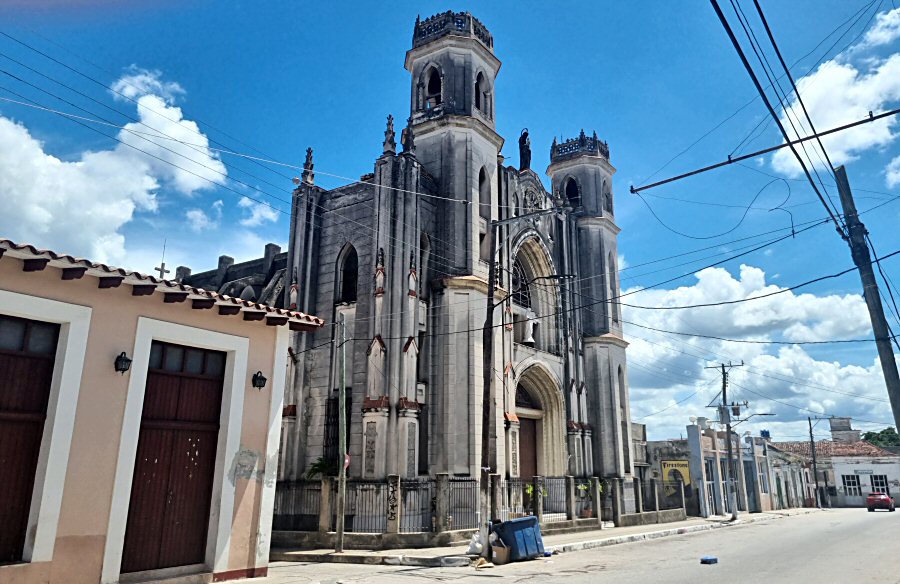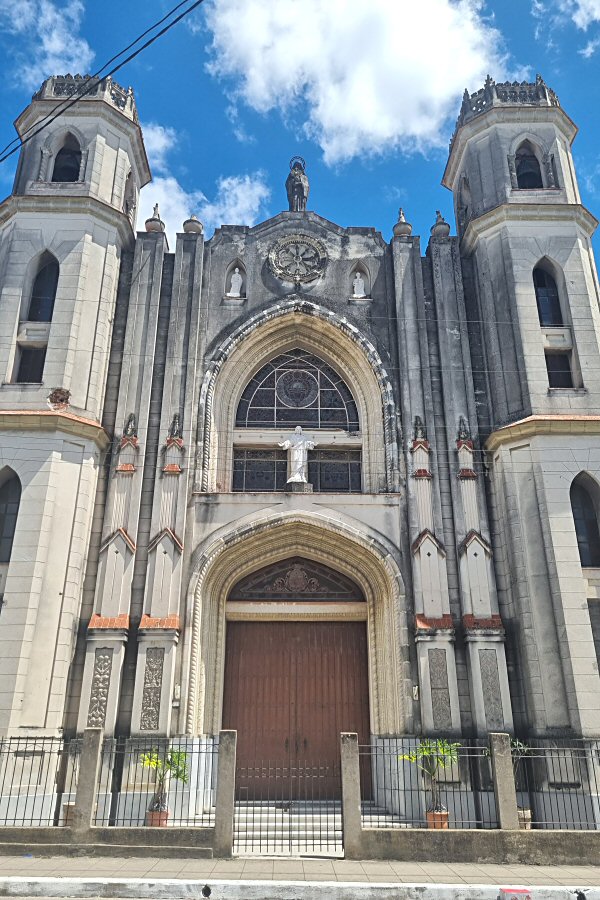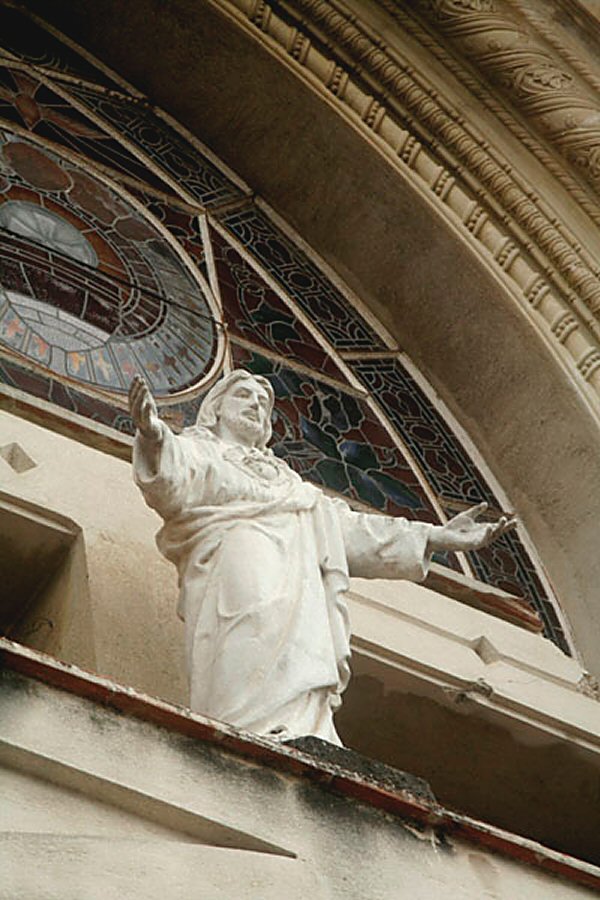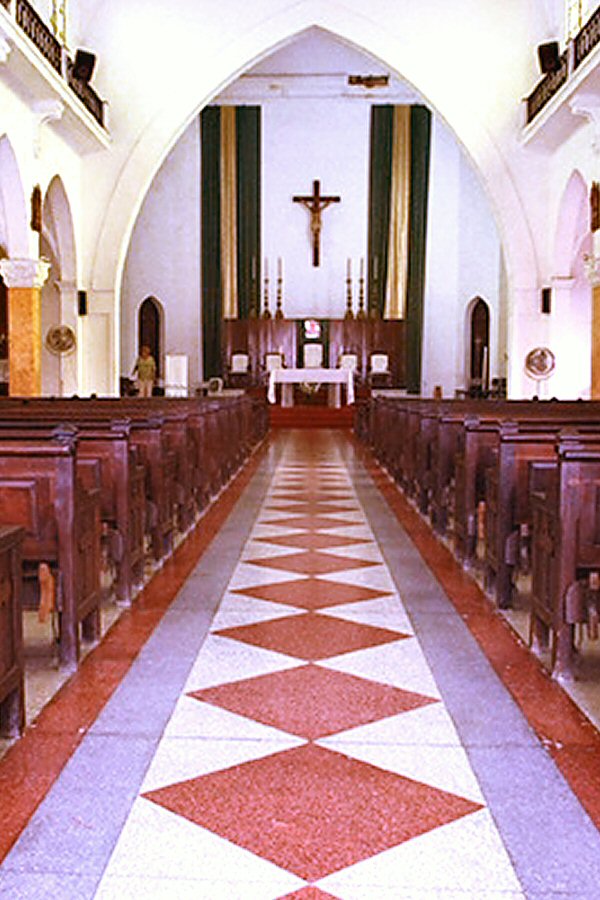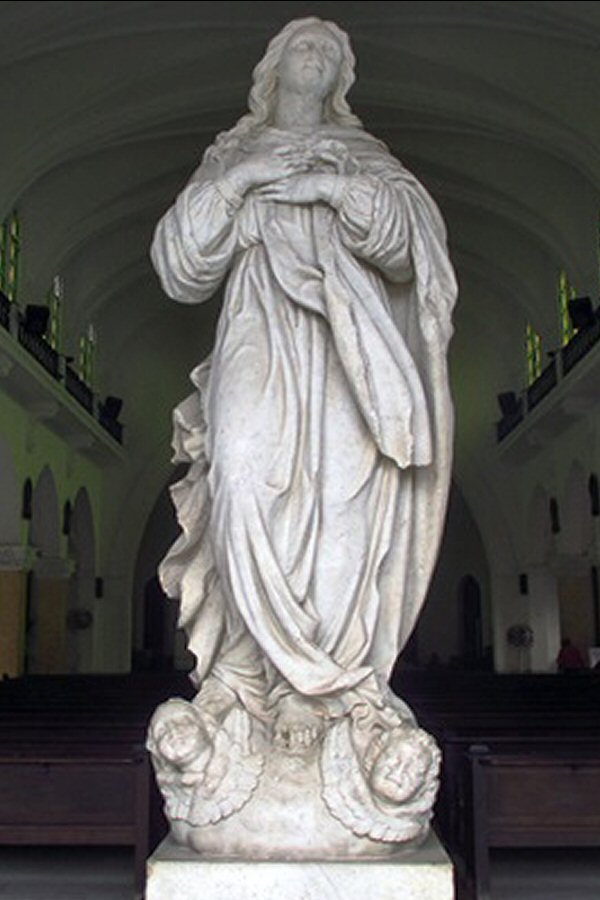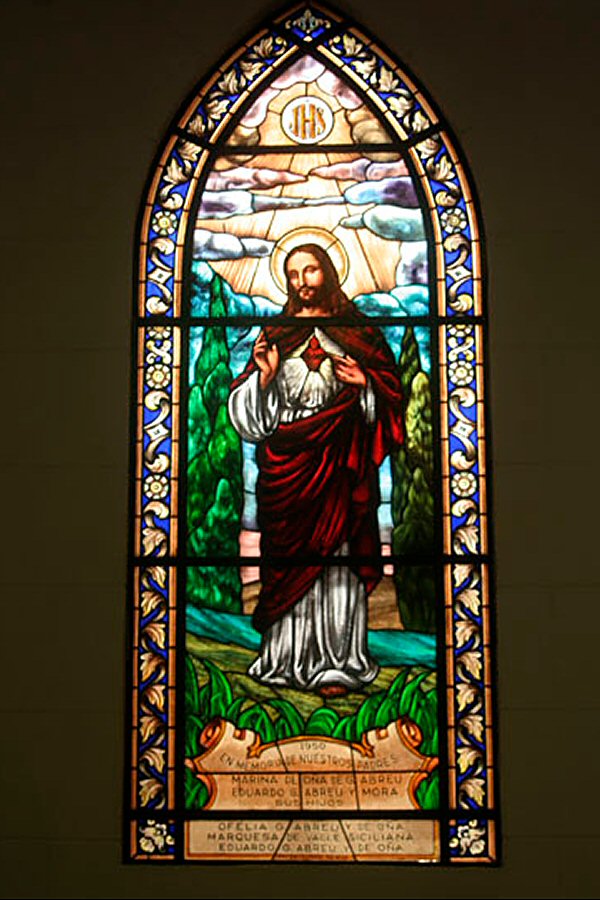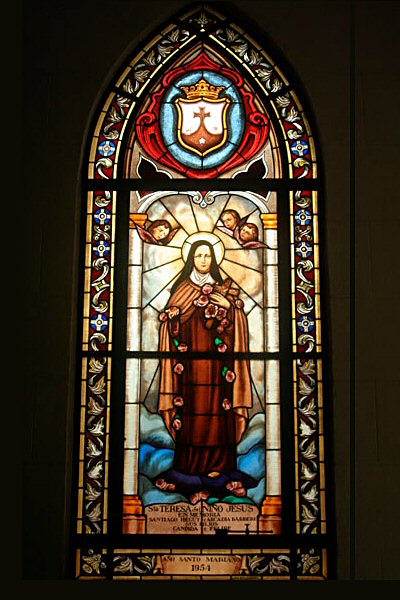
The Catedral Santa Clara de Asís is the most
important religious structure in the city. This Roman
Catholic church, dedicated to the patron saint of the city,
Saint Clare of Assisi, also houses the Diocese of Santa
Clara.
The founders of the church were believers in the
Immaculate Conception, a dogma of Catholicism that advocates
that Virgin Mary, mother of Jesus, unlike all other human
beings, was not affected by original sin but was purified
from all sin from the moment of her conception, that is,
from her personal existence.
HISTORY
The city's first church, the Ermita de la
Candelaria, was located on the site occupied by the Teatro
La Caridad building, around Park Leoncio Vidal. It had been
constructed at the initiative of the benefactor, Father Juan
de Conyedo, in 1696. It was replaced by a new one in 1738.
The new building was a beautiful, striking building with a
clock tower. It served as the main Parish Church for many
years.
However, in 1849, it was converted into a barracks
and later into a telegraph office. In 1884, the Teatro La
Caridad was built on part of the land of the old church.
The future of the church, which had fallen into
disrepair, was a topic of mayoral election campaigns for
years. Some residents favored preserving the colonial-era
church, which they called the Iglesia Mayor, since it was
one of the oldest in the growing city, realizing its
importance as a heritage site.
Another segment of the public favored redesigning
and expanding the existing park and relocating the church to
a nearby location.
Ultimately, the decision was made to demolish the
church and expand it into Lencio Vidal Park. In 1923, the
over two-century-old church was completely demolished.
Dissatisfied with this action, church officials
filed a formal complaint against the city and won, but the
church never received the compensation it was owed.
Construction of the new church began in 1940 and
Architect José A. Mendigutía was entrusted with the
construction of the church. On June 30, 1940, the ground was
blessed and the first cornerstone was laid by the Architect
Saul A. Balbona in a Mass held by Monsignor Martínez Dalmau,
accompanied by several priests from the Diocese of
Cienfuegos. However, due to a lack of financial resources
construction work stopped between 1949 and 1950. Thus, the
public's contributions and donations were secured through a
variety of attractive fundraising initiatives, including
raffles, lotteries, ticket sales, and other methods.
Finally, the church was completed and inaugurated on October
25, 1953. It was consecrated in 1954.
In the early 1970s, Monsignor Francisco Prego, the
bishop of the Cienfuegos diocese, which encompassed aslo the
province of Villa Clara, settled in Santa Clara and, since
he would be conducting mass there, requested from the
Vatican that the church in Santa Clara be declared a
cathedral. His request was granted on December 17, 1972, and
the church in Santa Clara was elevated to cathedral status.
On April 1, 1995, the Diocese of Santa Clara was
was established by the Ad aptius consulendum of Pope John
Paul II in created in the Catedral Santa Clara de Asís,
separating it from the Diocese of Cienfuegos-Santa Clara. It
is part of the Archdiocese of Camagüey since 1998.
ARCHITECTURAL FEATURES
The building has a neo-Gothic style with two
truncated towers that are 21,5 m high. French influence is
evident on the front and side facades. The facade features a
statue of Saint Clare of Assisi holding a gold monstrance,
the statue of Jesus, and the coat of arms of the city of
Santa Clara.
The floor inside is covered with marble dominated
by pink color.
The most impressive work of art within the
structure is the larger-than-life-size statue of the Virgin
Mary, known as "La Virgen del Camino" (Virgin of the
Travelers). The statue is 3 meters tall and weighs more than
three tons.
Until the revolution, this statue stood on the
Prolongación de la Calle Independencia to bless travelers.
Around that time, the statue disappeared and remained unseen
for about 30 years. It is alleged that the order to remove
the statue came from Che Guevara. In fact, as religious
authorities have admitted, it remained forgotten in a ditch
since the mid-1960s.
It was finally found by chance in 1986 in a ditch
covered with dirt and brush. After a political debate
erupted over whether the statue, long forgotten by the
people of Santa Clara, should be given to a museum or a
church, the statue was eventually given to religious
authorities. The image of the Immaculate Conception of the
Virgin Mary was placed at the main entrance of the cathedral
on June 11, 1995.
The cathedral includes a wonderful collection of
leaded stained glass windows at the vaults an ta the sides
which allow light to enter inside. The French stained-glass
windows in the main entrance also give the church a very
pleasant atmosphere.
The historic marble "pilon" or holy water basin
used for baptisms, and is remarkable.
The altarpiece above a white marble altar,
dedicated to Saint Clare of Assisi, were lost in 1960s. It
is argued that the Parish priest at the time destroyed the
altar and the alterpiece with hammer blows.
